





Triumph is een Engelse rijwielfabriek, opgericht in 1897 door de Duitsers Siegfried Bettmann en Maurice Schulte. In 1902 begon men motorfietsen te bouwen. In eerste instantie werden inbouwmotoren van toeleveranciers (onder andere Minerva) gebruikt, in 1905 werd een eigen ééncilinder ontwikkeld.

De eerste Triumph paralleltwin werd in 1932 door Val Page ontwikkeld,


maar een echte doorbraak kwam in 1936 toen Triumph bij de Ariel-groep van Jack Sangster kwam en Edward Turner de machines ging ontwikkelen.
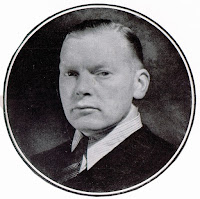 In 1938 bouwde Chef Designer Edward Turner de beroemde "Speed Twin",
In 1938 bouwde Chef Designer Edward Turner de beroemde "Speed Twin",die model zou staan voor de Triumphs tot in de jaren zeventig.

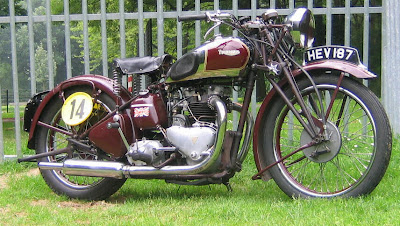 Triumph Speed Twin 5T 500 cc 1939
Triumph Speed Twin 5T 500 cc 1939De Speed Twin was nauwelijks zwaarder of breder dan een ééncilinder,
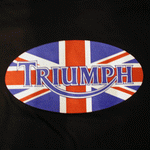
Deze deed aanvankelijk weinig met de merknaam, maar stond toe dat bij
(Bron Wikipedia)

 CELEBRATING AN ICON
CELEBRATING AN ICONTHE TRIUMPH BONNEVILLE

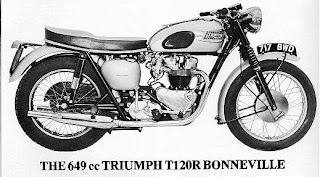
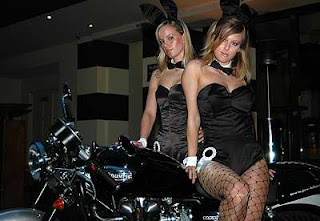 Let's Party!!
Let's Party!!
The Triumph Bonneville is an undisputed modern classic, synonymous with British
motorcycling and a byword for simple, original style. Today, it stands as the perfect blend
of British heritage, design and glamour, backed by modern technology.


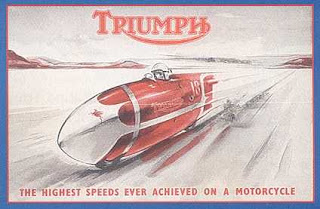
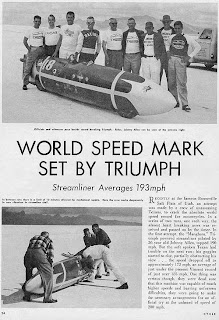 Named in recognition of Johnny Allen’s 1950’s record breaking feats on a Triumph at the
Named in recognition of Johnny Allen’s 1950’s record breaking feats on a Triumph at theBonneville Salt Flats in Utah, the very first Bonneville, the T120, was showcased at the
Earls Court Bike Show in 1958, with the machines available for sale to the general public
the following year.




A flat Tracker
but British...very British !
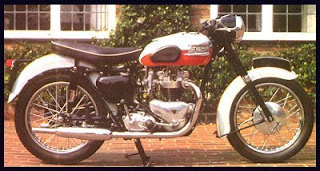
1959
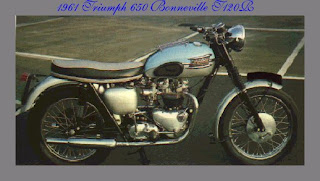
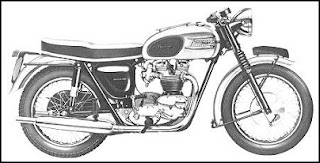
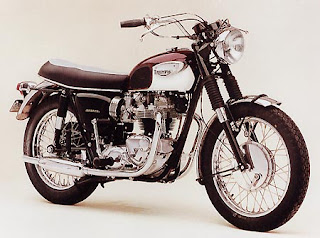
1965

The Saint

The Bonneville TT Special
 An instant hit in both the UK and America, essentially the T120 was a
An instant hit in both the UK and America, essentially the T120 was a
high performance, twin carburettor version of Triumph’s T110 Tiger model.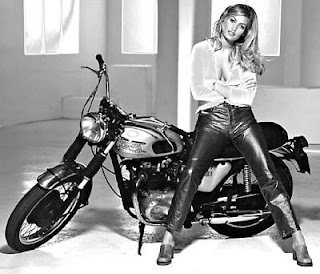
 The combination of extra performance with a fine-handling, light weight chassis
The combination of extra performance with a fine-handling, light weight chassis


Bud Edkins


500 cc GP Triumph racer

Mike Hailwood

Percy Tait
ad attractive design proved a winning combination and
the bike went on to become one of the most
successful models of the era.
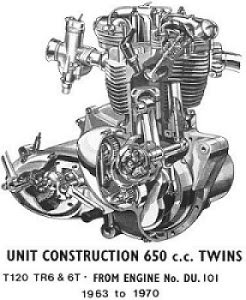
Today’s Bonneville is an agile, honest roadster – perfect for getting around town in style or
blatting around back lanes - but back then it was a high performance sports bike and
build by Triumph in 1959 as

The Fastest Production Roadster
offering “the highest performance from a standard production
motorcycle”.


1971
Toujours en 71, au bol d’or,TRIUMPH engage deux motos à cadre Rob North; la # 69 pilotée par les français Gérard DEBROCK et Olivier CHEVALIER et la # 70 pilotée par Percy TAIT et Ray PICKRELL; les deux français abandonnèrent après 2 chutes et la # 70 remporta la victoire devant LAVERDA.
(Bron: Moto Classique Anglaises)

Although in standard trim the T120 could not quite manage the 120mph
(193km/h) top speed that its name suggested, it was good for over 110mph (177km/h)
and notched up plenty of victories on the race track. Racing success spawned a special
edition ‘Bonneville Thruxton’ (1964/65), which in turn inspired a generation of café racer
machines.

 Utah Saltflats 1971
Utah Saltflats 1971
The making of an icon:
Much more than a racer though, during the halcyon days of motorcycling in the 1950s and
60s, the Triumph Bonneville established itself as the iconic bike of the era – a status that it
retains to this day. Motorcycling was at the height of its popularity and the Bonneville
achieved global cult status with many a charismatic screen legend associated with this
evocative machine, both on and off screen.
Steve McQueen in The Great Escape 1961
Stuntman Bud Edkins has died
Full Story:
http://www.flixster.com/news/2007/10/12/stuntman-bud-edkins-has-died
&
Bud Ekins, the man behind the most famous motorcycle stunt in movie history, has died aged 77. Ekins was in the saddle for the iconic scene in The Great Escape, when Steve McQueen's character jumps a barbed wire fence on a bike to avoid capture as he escapes a German prisoner-of-war camp. A longtime friend of movie star McQueen's, Ekins also doubled for the actor in 1968 crime drama Bullitt, and taught the film star everything he knew about off-road biking. Born in Hollywood in 1930, Ekins was a life-long motorbike enthusiast and aficionado and is credited as being one of America's leading collectors of vintage and rare motorcycles. As well his work on the McQueen films, Ekins also served as a stuntman on James Bond film Diamonds Are Forever, Animal House, and The Blues Brothers. He founded bike race the Baja 1000 and was inducted into the Motorcycle Hall Of Fame in 1999.

James Dean
Marlon Brando
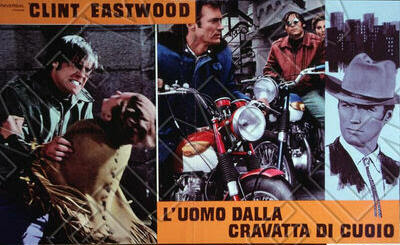




These included Steve McQueen in The Great
Escape, James Dean, in Rebel Without a Cause, and Marlon Brando in The Wild One - as
well as the likes of Bob Dylan and Clint Eastwood and many more

Pamela "Thunderbird" Anderson

amongst other cultural icons of the era.

In December 1967, legendary American daredevil Evel Knievel even chose the Triumph
Bonneville for his ill-fated attempt to jump the Caesar’s Palace fountain in Las Vegas.
For many, 1969 was the Bonneville’s finest hour with a series of progressive developments
culminating in a model at the peak of its form. The most significant of the changes was to
the engine, which had notable trouble-free carburetion, a smooth power delivery and great
tractability at low speeds.
The 1969 edition is also considered a design highlight for the Bonneville; the tank badge
was changed to a more simple ‘picture-frame’ design, the dual seats were fitted with
raised tops, and the rear units became mere exposed springs which most young riders
wanted. Even the colour scheme adopted was a fashionable Olympic Flame and whitelined
in silver.
The Rock n’ Roll Years:
 Especially in the UK in the 1960s, the Triumph Bonneville became closely associated with
Especially in the UK in the 1960s, the Triumph Bonneville became closely associated with
Rock n’ Roll culture – with versions of the Bonneville being adopted by British Rockers as
the ultimate motorcycle.


 London’s Rocker community found a home at the famous transport café, Ace Café, which
London’s Rocker community found a home at the famous transport café, Ace Café, which
became the heart of motorcycling and Rock n’ Roll culture – and Bonnevilles, or modified
versions of them, would always be lined up outside. The most popular machine of the
Rocker period was the Triton – a custom built motorcycle made from a Norton Featherbed
frame, and a Triumph Bonneville engine – combining what was considered

the best handling frame of the era with the fastest racing engine.
The Right Royal Occasion:
The Bonneville continued to make its mark in the 1970s and 80s, when special, limited
edition bikes were launched to mark significant Royal occasions.

In 1977, the T140J
celebrated the Queen’s Silver Jubilee;
and in 1981, 250 T140LE Royal Wedding Bonnevilles
were produced to mark the Royal wedding between Prince Charles and Diana.

1973

1974

1976

following a government-sponsored merge with Norton Villiers. Workers took over the
Meriden factory in 1973 amid rumours that it was to be closed and a strike ensued.
Virtually no bikes were produced over the following year and in 1975 the Meridan Worker’s
Cooperative was formed. Production resumed and Bonneville T140s continued to be built
into the early 1980s and were the last bikes to be built by Triumph before the Meriden
factory closed in 1983. Even then the Bonnie refused to die. Small numbers were built
under licence by LF Harris of Newton Abbot, Devon, between 1985 and '88.



Bonneville into the 21st Century

The (first) New Bonneville 2000
modern version of the bike was unveiled. Blending authentic styling with modern
materials and manufacturing techniques, the first of the new Bonnevilles was produced

with a 790cc parallel-twin motor.
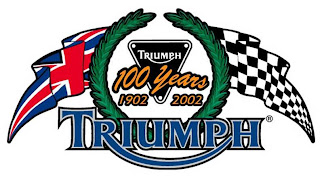

2002
Triumph Bonneville T100 Centennial Edition
A centenary model followed the next year – the
Bonneville T100 Centennial Edition - marking 100 years of the Triumph brand.
The early years of the 21st Century have continued to witness the Bonneville’s evolution,
including an increase in capacity to 865cc and the introduction of fuel injection
(cleverly concealed to retain the bike’s original styling).
The Bonneville family has also grown to
include the T100, Scrambler and Thruxton models.

The Scrambler...

The Thruxton

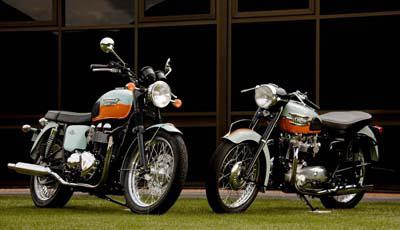

The 2009 Limited Editions...
The Bonneville has found real relevance today as a simple, authentic roadster offering
plenty of performance combined with easy-going road manners. Clever design hides
modern technology to retain the authentic retro silhouette, while the characterful and
distinctive note of the twin cylinder engine is unmistakable. A low seat height and similarly
low centre of gravity make it an agile, manageable motorcycle that all riders – ranging
from those with little experience to those with lots – can appreciate. It remains an
indisputable icon - a symbol of rebellion and individuality – and still inspires a loyalty and
emotion in everyone that rides it.
(Bron: Triumph Motorcycles)

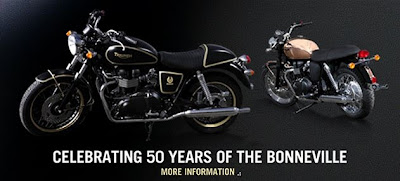

A 2009 Bonneville...
 versus a 1971 bonneville.
versus a 1971 bonneville.

A 2007 Bonneville 790 cc versus...
 a 1973 650 cc US specs T120-R Bonneville.
a 1973 650 cc US specs T120-R Bonneville.

The Real It U M P H


Two Thousand Nine will be Fine...
A Very Happy New Motoring Year!
Motoring George Spauwen


Sponsored by
Victrace Sitebuilding












You Stole my BLOG !! Why ??
ReplyDelete